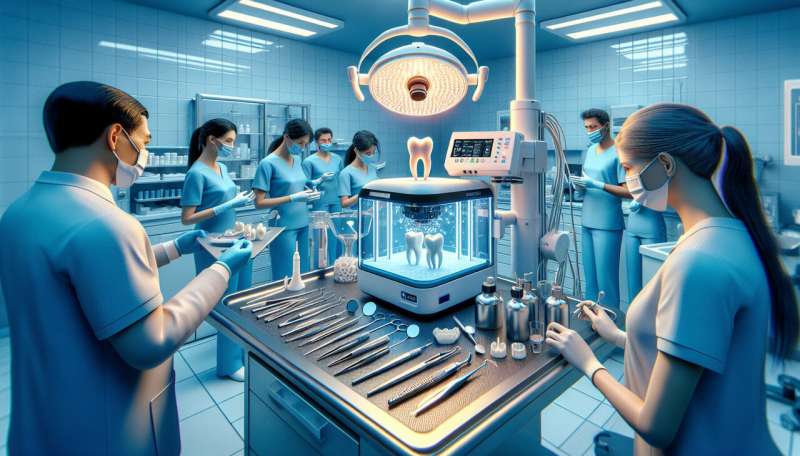This article has been reviewed according to Science X's editorial process and policies. Editors have highlighted the following attributes while ensuring the content's credibility:
fact-checked
proofread
Icariin-releasing 3D-printed scaffolds for in situ regeneration of cleft bone

A study exploring the potential of 3D-printed scaffolds with controlled delivery of small molecule, icariin (ICA), to promote cleft bone regeneration through recruitment and activation of endogenous stem/progenitor cells was presented at the 102nd General Session of the IADR, which was held in conjunction with the 53rd Annual Meeting of the American Association for Dental, Oral, and Craniofacial Research and the 48th Annual Meeting of the Canadian Association for Dental Research, on March 13-16, 2024, in New Orleans, LA, U.S..
The abstract, "Icariin-Releasing 3D-Printed Scaffolds for In Situ Regeneration of Cleft Bone," was presented during the "SCADA: Basic and Translational Science Research" Poster Session that took place on Thursday, March 14, 2024, at 11 a.m. Central Standard Time (UTC-6).
The study, by Soomin Park of Columbia University, New York, NY, U.S., prepared Polycaprolactone (PCL) scaffolds embedded with 0.1—0.3% of ICA, followed by 3D-printing scaffolds (3 mm x 0.7mm; 200 ~ 250 µm interstrand microchannels). Mechanical tests were performed, and in vitro, efficacy in bone formation was tested using mesenchymal stem/progenitor cells. For in vivo, a rat model of the cleft defect was established.
A 3 mm x 1 mm circular defect was briefly created at the center region of the upper incisor socket between the anterior and posterior inner borders of the incisor. The ICA/PCL scaffolds were implanted in the defect via press-fitting, and the soft tissues were closed by suturing.
The 3D-printed ICA/PCL scaffolds significantly enhanced in vitro bone formation, with notable variances depending on the loading doses and release kinetics. The most promising outcome was observed in 0.3% ICA/PCL scaffolds with 2-hr NaOH surface treatment. Consistently, RT-qPCR analysis showed the increased expressions of COL1A1, IBSP, and BGLAP in 0.3% ICA/PCL with 2- & 3-hr NaOH treatments as compared to the other groups.
The study's investigators achieved reproducible and stable press-fitting implantation of ICA/PCL scaffolds into the rat cleft defects and are following up with in vivo bone regeneration outcomes regarding initial cell recruitment, differentiation, integration with host tissue, and matrix turnover. Icariin-embedded 3D-printed PCL scaffolds may have the potential to facilitate bone regeneration after alveolar cleft osteoplasty.





















